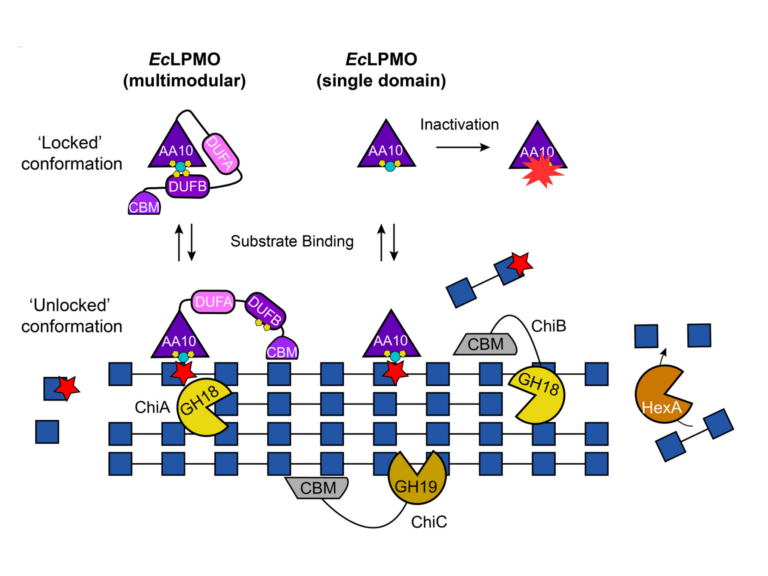Duplication and neofunctionalization of a horizontally-transferred xyloglucanase as a facet of the red queen co-evolutionary dynamic
Oomycetes are heterotrophic protists that share phenotypic similarities with fungi, including the ability to cause plant diseases, but branch in a separate and distant region of the eukaryotic tree of life. It has been suggested that multiple horizontal gene transfers (HGTs) from fungi-to-oomycetes contributed to the evolution of plant-pathogenic traits. These HGTs are predicted to include secreted proteins that degrade plant cell walls. This is a key trait in the pathology of many oomycetes, as the plant cell wall represents a primary barrier to pathogen invasion and a rich source of carbohydrates. Many of the HGT gene families identified have undergone multiple rounds of duplication. Using a combination of phylogenomic analysis and functional assays, we investigate the diversification of a horizontally-transferred xyloglucanase gene family in the model oomycete species Phytophthora sojae. Our analyses detect 11 genes retained in P. sojae among a complex pattern of gene duplications and losses. Using a phenotype assay, based on heterologous expression in yeast, we show that eight of these paralogues have xyloglucanase function, including variants with distinct protein characteristics, such as a long-disordered C-terminal extension that can increase xyloglucanase activity. The functional xyloglucanase variants analysed subtend an ancestral node close to the fungi-oomycetes gene transfer, suggesting the horizontally-transferred gene was a bona fide xyloglucanase. Expression of xyloglucanase paralogs in Nicotiana benthamiana triggers distinct patterns of reactive oxygen species (ROS) generation, demonstrating that enzyme variants differentially stimulate pattern-triggered immunity in plants. Mass spectrometry of detectable enzymatic products demonstrates that some paralogs catalyze production of variant breakdown profiles, suggesting that secretion of multiple xyloglucanase variants increases efficiency of xyloglucan breakdown, as well as potentially diversifying the range of Damage-Associated Molecular Patterns (DAMPs) released during pathogen attack. We suggest that such patterns of protein neofunctionalization, and variant host responses, represent an aspect of the Red Queen host-pathogen co-evolutionary dynamic.


